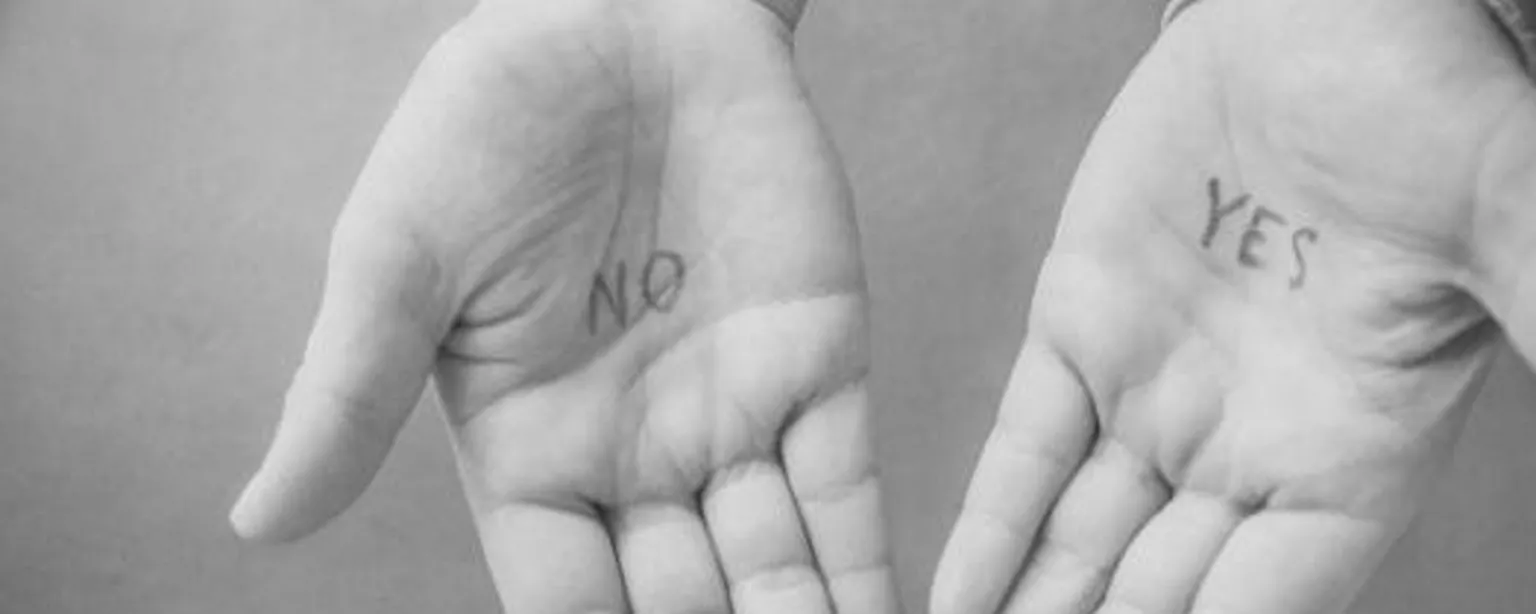Talk to any responsible parent and they’ll explain the power of saying “no”. A capitulating “yes” might well avoid a child’s tantrum at the time, but saying “no” is better long-term because it creates boundaries, enables children to tolerate disappointment and reinforces control. In short, saying “no” is often a good thing. So why do we so singularly fail to say “no” at work to adults who are much more intellectually capable of understanding and accepting it?
Like most things, the answer lies deep within our psyche. The automatic “yes” in us is the part that wants to shows ourselves as being a ‘good person.’ “Yes” is less awkward than saying “no”. It also feels more constructive. Even when people do say “no”, they’re much more likely to say “yes” the next time – the so-called ‘second-ask effect’ – because they feel the need to assuage themselves of the guilt they felt previously.
Of course in a work context, this is not clever at all. Taking on everyone else’s tasks or diverting time to accommodate someone else’s work simply because of a desire not to offend is a recipe for resentment. But things don’t have to be like this.
Saying “no” can actually help your co-workers
Saying “no” doesn’t have to be difficult. It’s an eminently learnable and self-reinforcing skill. If saying “yes” is about avoiding guilt, then saying “no” is about letting other people know your needs and what resources you need to meet them – and why not accommodating their needs actually helps them.
The best people say “no” by actually saying “yes” – although there’s a subtle difference. For instance: “Yes, I can take your extra work, but it means my current project will take longer. Is this okay?” Not only does this type of response depersonalise the request, but it gives power back to the person asking it because they can decide what is most important to them.
Replying “no” is acceptable when it’s used for reaffirming authority – for example, “Sorry, this is not my job. It’s for you to do.” Or for the important task of delegating – for example, “I think that task would be better given to someone else for their own self-development.”
Both of these responses work because each time “no” is a strategic, rather than reactive, response, which means it’s unlikely to be taken the wrong way. As research by Stanford University’s Daniel Newark reveals, most people actually overestimate the likelihood they’ll be rejected when asking for things – he found people think they need to ask 10 people before they’ll get a “yes” when actually they only need to ask six. This is a powerful fact to know. Given it’s more than likely a “no” will be expected, delivering a cogent, well-reasoned “no” doesn’t have to feel onerous.
Practice makes perfect
But there are things you can do to make this easy. Saying “no” to colleagues should always be a face-to-face experience. Reaction needs judging, while emails can be misconstrued. The best “no” is a short one – explained, but not overly so.
It may not feel comfortable saying “no”, but it does get better the more it is said (for the right reasons, of course). A “no” can simply be explained by company policy (“It’s not allowed here.”), which depersonalises the answer even further. But even if a “no” does require judgement, as long as it appears fair, it can rarely be challenged.
Of course, we’d all love to say “yes” more often. British comedian Danny Wallace wrote Yes Man about how saying “yes” instead of “no” to every request of him enhanced his life. But saying “no” is a no-brainer when it’s needed. Stick to the rules and it doesn’t have to be the difficult experience you think it might be.





